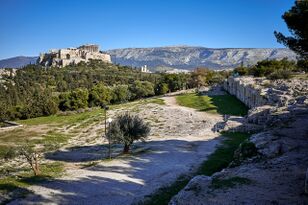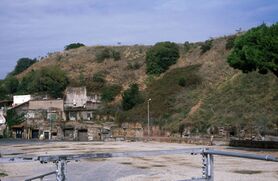Classical antiquity
Classical antiquity, also known as classical society or simply antiquity, is a periodization of Mediterranean, Western, and European history which starts with the reappearance of the historical record in the 8th century BC (ending the "Dark Ages" caused by the Late Bronze Age collapse) and concluding around the 5th century AD - an expanse of about thirteen centuries. This era is characterized by the growth of new political and social formations as well as the spread of technology, trade, and exploration beginning with the travels of Phoenician merchants.
Classical Greek society, possibly the most influential period of classical history, began in the 8th century AD. The society, culture, and politics of major Greek polities, particularly Athens, remains an influence in world culture today, particularly for the developments made in philosophy and science as well as the best exemplar of democracy. The conquests of Alexander in the 4th century BC spread these Greek norms throughout the known world, and the kingdoms which resulted in the power struggle following his death, known as Hellenistic kingdoms, carried on Greek influence to a large extent. Classical Greece is considered to have ended with its decline and ultimate conquest by Rome in the 1st century BC.
Classical society reached its zenith with the Roman Empire, which brought vast expanses of modern Europe, Africa, and Asia into one polity, taking its cultural, technological, and economic forms with it. The empire spanned 5 million km2 (1.9 million mi2) at its height in 117 AD.[1][2] During the third century AD, the empire entered a period of sharp economic and political crisis which ended only with the centralizing reforms of emperor Diocletian (r. 284–305). The contradictions and struggles of maintaining such a large area, compounded by the threat of tribal groups from the North and East, forced Diocletian to significantly transform the Roman imperial system, including by revolutionary new forms of military organization, a revised taxation system, and eventually, an administrative division of the Empire into East and West. In the 5th century, the Western half faced renewed crisis and eventual collapse into regional states, while the Eastern Empire continued to exist for centuries. This era of transition is also known as late antiquity, although this term may be considered broader in scope and covering the changes in Europe lasting into the 8th century AD.
Notes
References
- ↑ Turchin, Peter; Adams, Jonathan M.; Hall, Thomas D. (26 Aug 2006). "East-West Orientation of Historical Empires and Modern States" (PDF). Journal of World-Systems Research. University Library System, University of Pittsburgh: 219–229. doi:10.5195/jwsr.2006.369. ISSN 1076-156X.
- ↑ "The Roman Empire (article)". Khan Academy. 30 Jan 2024. Retrieved 30 Jan 2024.





